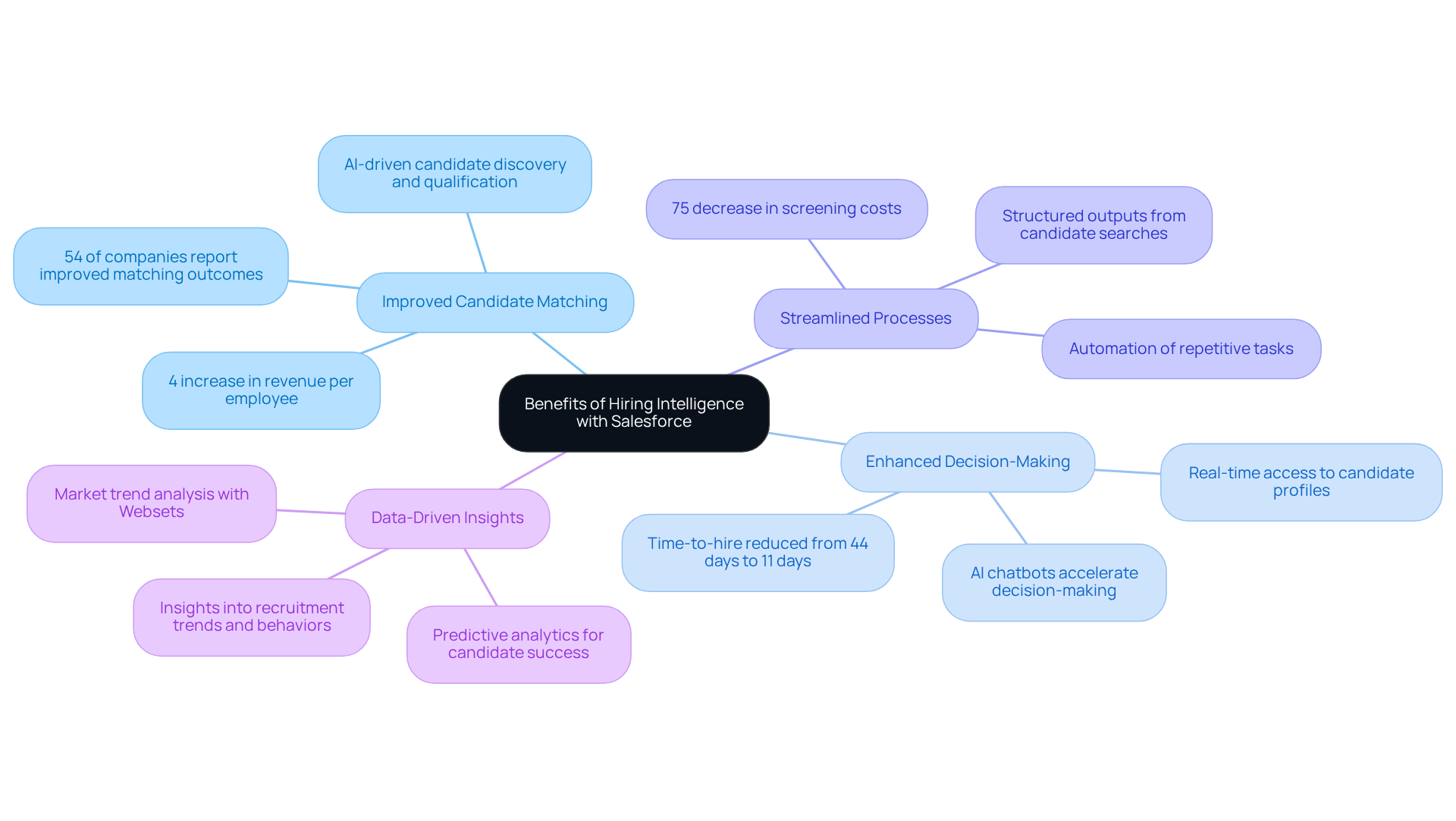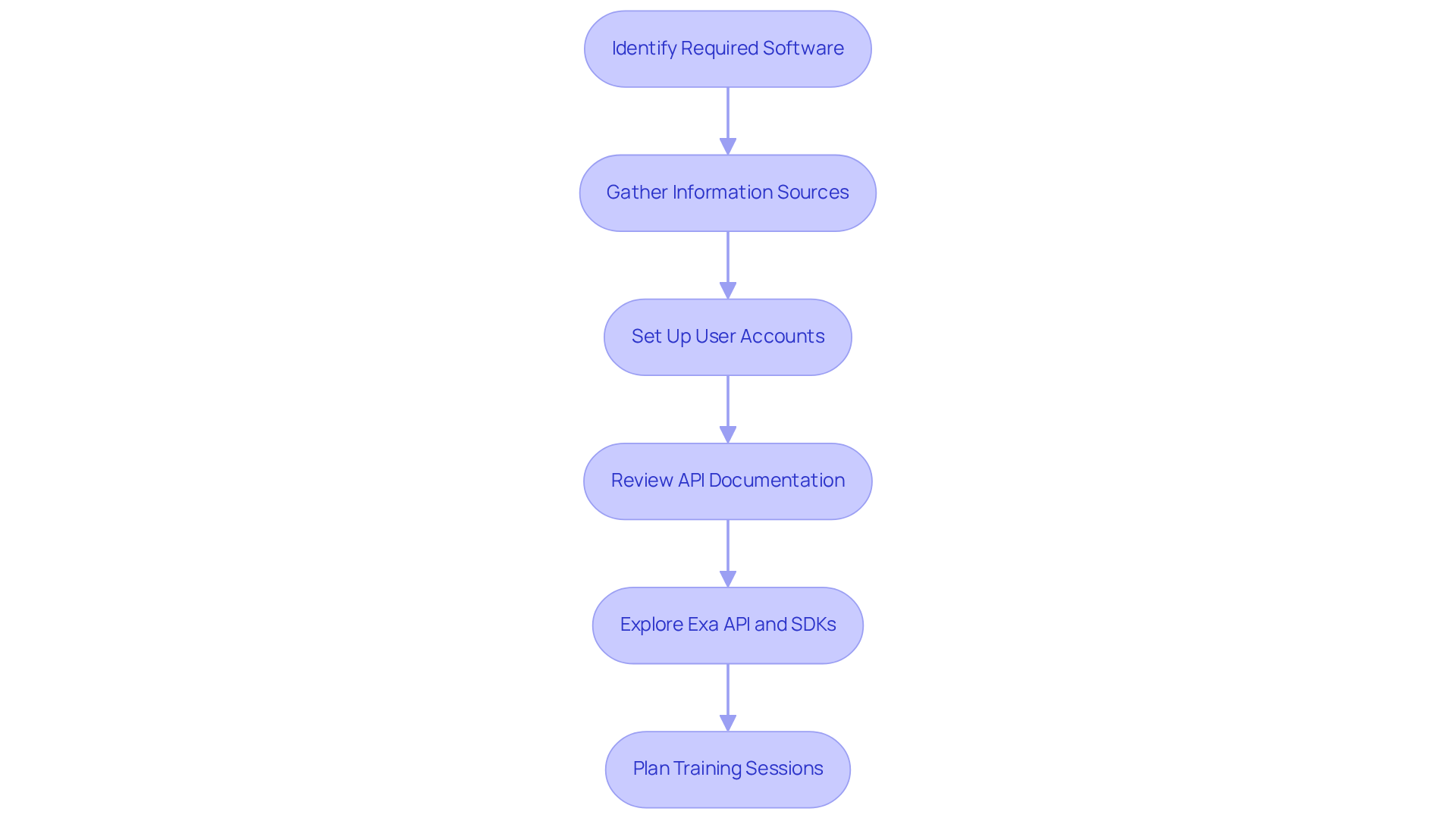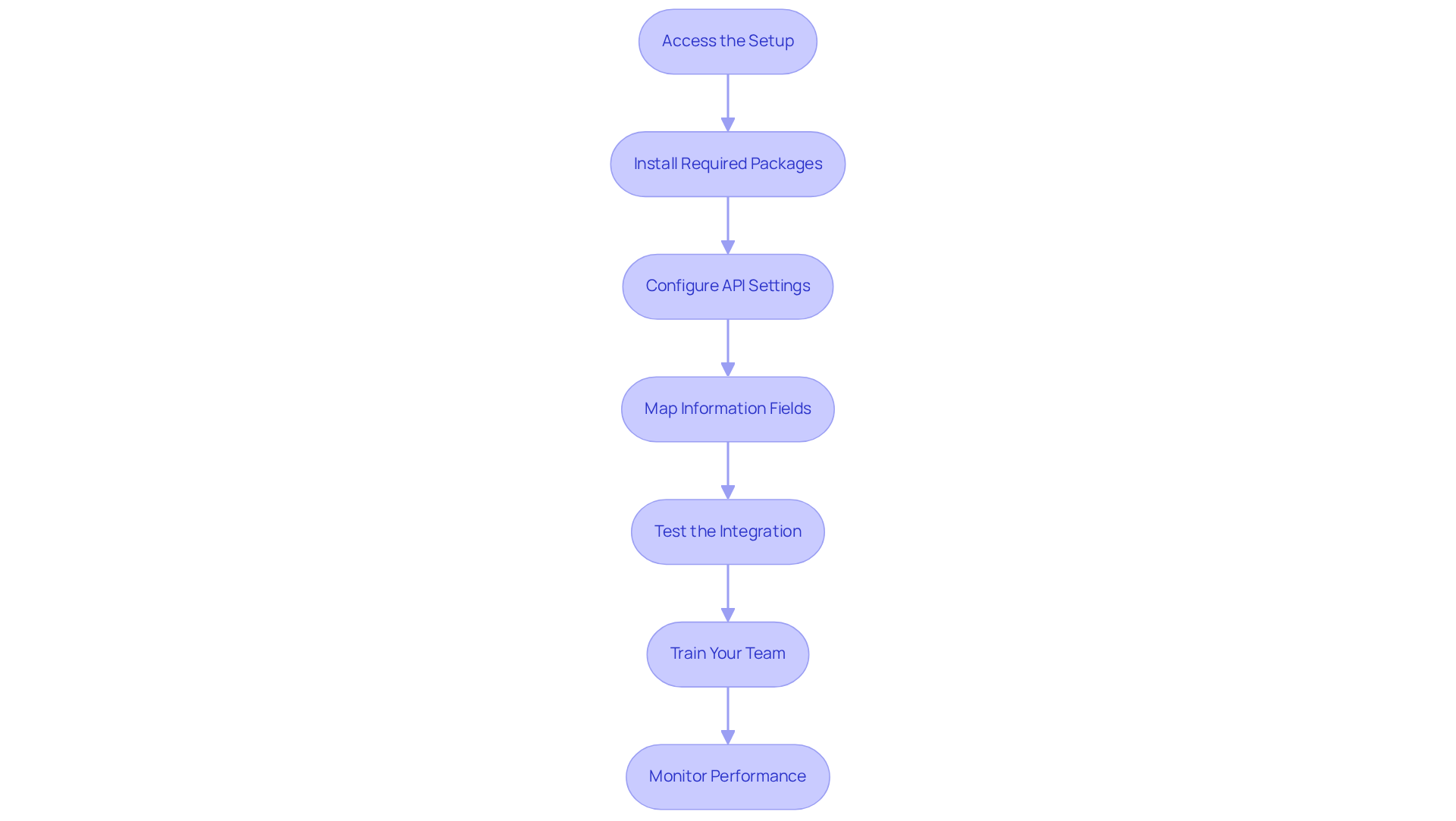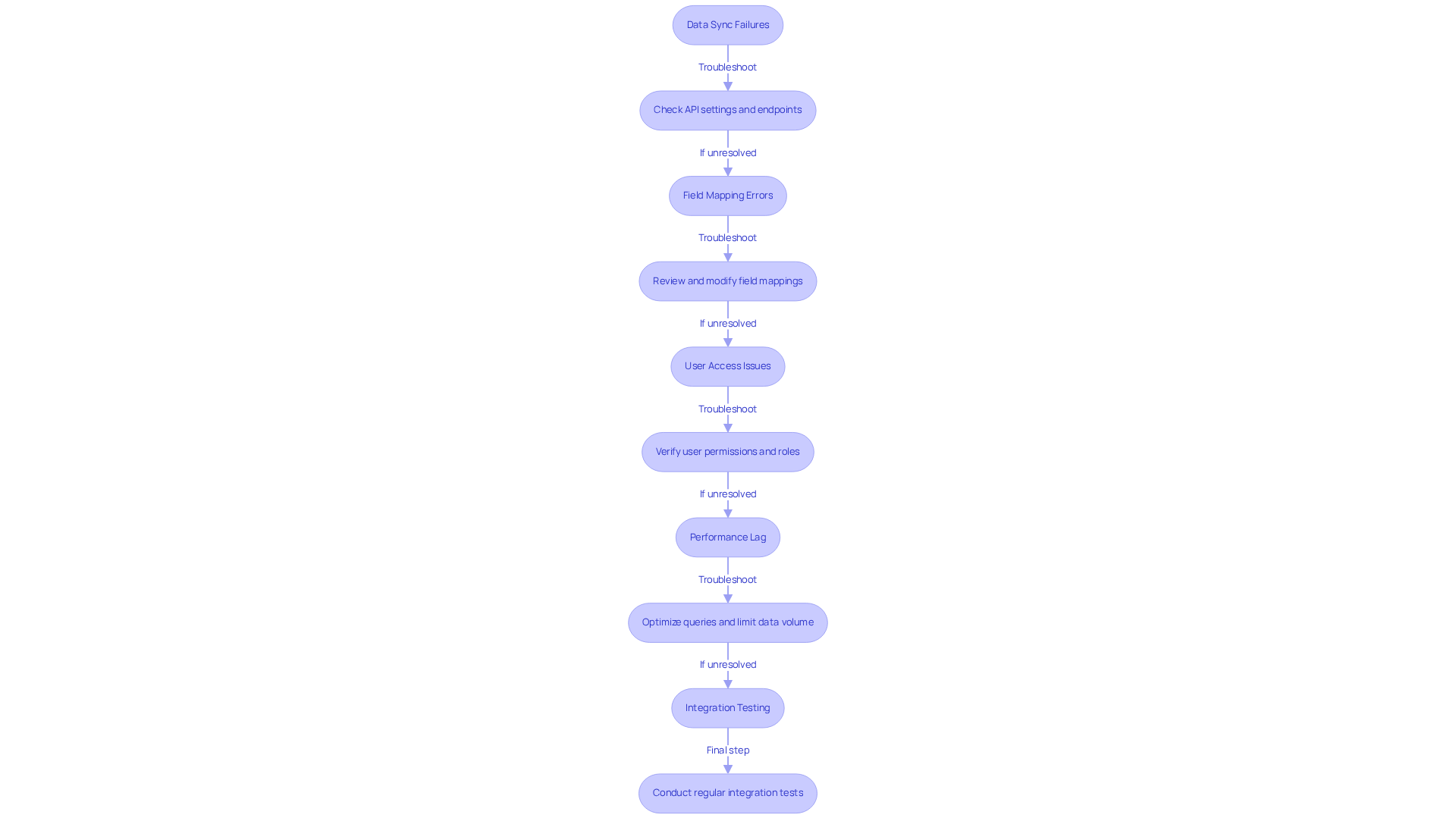Overview
This article presents a compelling overview of how to effectively integrate hiring intelligence with Salesforce. It outlines the essential steps and highlights the significant benefits that such integration brings to recruitment processes. By enhancing candidate matching, decision-making, and overall recruitment efficiency, this integration is supported by data-driven insights and automation tools. These tools not only streamline workflows but also reduce hiring times, ultimately transforming the recruitment landscape.
Introduction
Integrating hiring intelligence with Salesforce presents a transformative opportunity for organizations seeking to elevate their recruitment strategies. By leveraging advanced analytics and automation, companies can enhance candidate matching, streamline processes, and make data-driven decisions that significantly reduce time-to-hire.
However, the journey toward successful integration is fraught with challenges. What common pitfalls might organizations encounter? How can they effectively navigate these obstacles to maximize the benefits of this powerful combination?
These are critical questions that demand attention as businesses strive for excellence in their hiring practices.
Understand Hiring Intelligence and Its Benefits for Salesforce
By integrating hiring intelligence with Salesforce, recruitment intelligence leverages information and analytics to refine hiring methodologies, significantly enhancing recruitment strategies. The key benefits are substantial:
- Improved Candidate Matching: Advanced analytics empower organizations to pinpoint candidates whose skills and experiences align closely with job requirements. This method has been proven to enhance candidate selection accuracy, with 54% of companies utilizing AI reporting improved matching outcomes, culminating in a 4% increase in revenue per employee. Websets elevates this process by offering AI-driven candidate discovery and qualification, enabling recruiters to filter candidates by skills, experience, and location, thus identifying the ideal fit for open roles.
- Enhanced Decision-Making: Real-time information access equips recruiters to make swift, informed decisions, effectively slashing time-to-hire from an average of 44 days to a mere 11 days. Organizations employing AI chatbots have also accelerated this decision-making process, which is essential in today’s competitive job market. Tools provided by Websets augment candidate profiles with LinkedIn data, emails, and past work experience, facilitating quicker and more informed selection decisions.
- Streamlined Processes: Automating repetitive tasks such as resume screening and interview scheduling allows recruiters to concentrate on strategic initiatives. Businesses that adopt AI recruitment technologies report a staggering 75% decrease in screening costs, highlighting significant improvements in selection processes while still requiring human judgment for final decisions. Websets aids this by automating candidate searches and delivering structured outputs, thereby streamlining the recruitment workflow.
- Data-Driven Insights: Analytics furnish valuable insights into recruitment trends, candidate behaviors, and market conditions. Predictive analytics can identify which candidates are most likely to succeed in specific roles by analyzing historical recruitment data. This data-centric approach enables organizations to proactively refine their recruitment strategies, ensuring competitiveness and responsiveness to evolving market dynamics. With Websets, organizations can and competitor landscapes, gaining strategic insights that inform their recruitment practices.
Understanding these advantages is vital for effectively integrating hiring intelligence with Salesforce into the platform, as it lays the groundwork for subsequent stages in the integration process.

Prepare Your Tools and Resources for Integration
To effectively with Salesforce, comprehensive preparation of tools and resources is essential. Begin by identifying the required software. Confirm access to Salesforce and any additional recruitment tools, such as Applicant Tracking Systems (ATS) or HR management software, that will be integrated.
Next, gather all pertinent information sources. Compile resumes, candidate profiles, and historical recruitment information to facilitate comprehensive analysis. Emphasizing data consistency and accuracy at this stage is crucial, as it significantly enhances the overall experience in recruitment and talent management.
Following this, set up user accounts for team members involved in the integration. Ensure they possess the necessary permissions to access and utilize the tools effectively.
Review the API documentation of the platform to understand the connection method for your hiring intelligence tools. Additionally, explore the Exa API and SDKs provided by Websets, which can enhance your lead generation and recruitment efforts. This knowledge is vital to integrate hiring intelligence with Salesforce for seamless integration and leveraging innovative technologies.
Finally, plan for training sessions for your team. Guarantee they are skilled in utilizing the new tools and fully comprehend the integration. Incorporate Websets' pre-built tutorials and live demos to further enhance your team's understanding of the Exa API and its capabilities, ensuring they are well-equipped to manage candidate relationships throughout the recruitment process.
By addressing these elements, you will establish a robust foundation for successful integration, ultimately allowing you to integrate hiring intelligence with Salesforce and enhance your recruitment capabilities.

Execute the Integration Process: Step-by-Step Instructions
To successfully integrate hiring intelligence with Salesforce, follow these essential steps:
- Access the Setup: Log into your account and navigate to the Setup menu.
- Install Required Packages: Install any necessary packages from the AppExchange that your recruitment intelligence tool requires.
- Configure API Settings: Access the API settings in the platform and configure the required endpoints to establish a connection with your recruitment intelligence tool.
- Map Information Fields: Identify and map the information fields from your hiring intelligence tool to the corresponding fields in Salesforce, ensuring seamless information flow.
- Test the Integration: Conduct a test run to verify that data transfers accurately between systems, checking for discrepancies or errors.
- Train Your Team: After successful integration, provide to your team on utilizing the new features and tools effectively.
- Monitor Performance: Continuously monitor the system's performance post-integration to identify areas for improvement and optimize functionality.
By adhering to these steps, you can ensure a smooth and effective process to integrate hiring intelligence with Salesforce, which enhances your recruitment processes.

Troubleshoot Common Integration Issues and Optimize Performance
While can pose challenges, understanding common issues and their solutions can significantly streamline the process. Consider these key problems and troubleshooting strategies:
- Data Sync Failures: Frequent data sync failures often occur during high traffic times or due to expired authentication details. Sync attempts may fail intermittently or during peak usage, disrupting operations. To address this, check API settings and ensure all endpoints are correctly configured. Implement automated alerts to notify your team of sync failures immediately.
- Field Mapping Errors: Misalignment in field mappings can lead to significant discrepancies in information. Review and modify field mappings to ensure all information fields are correctly aligned between systems. This step is crucial for maintaining information integrity and avoiding recruitment delays. For instance, a case study showed that organizations that regularly reviewed their field mappings reduced errors by over 30%.
- User Access Issues: If team members encounter access problems, verify that their user accounts have the necessary permissions. Proper configuration of role hierarchies and profiles is essential to ensure compliance and facilitate smooth user experiences. As noted by industry experts, "Ensuring that users have the right access is foundational to a successful integration."
- Performance Lag: Slow system performance can hinder recruitment efforts. Optimize queries and limit the volume of information processed simultaneously to enhance speed. Regular performance audits can help identify bottlenecks and improve overall efficiency. A recent report indicated that organizations that optimized their data processing saw a 25% increase in system responsiveness.
- Integration Testing: Conducting regular integration tests is essential for identifying potential issues before they interfere with your recruitment activities. This proactive approach allows for timely adjustments and ensures that the integrated systems function seamlessly.
By addressing these common integration challenges, organizations can enhance the performance of their systems and integrate hiring intelligence with Salesforce, leading to a more efficient and effective hiring process.

Conclusion
Integrating hiring intelligence with Salesforce revolutionizes recruitment strategies by harnessing advanced analytics and streamlined processes. This integration not only enhances candidate matching but also improves decision-making and reduces time-to-hire, ultimately driving superior business outcomes. By leveraging tools like Websets, organizations can refine their recruitment methodologies and maintain a competitive edge in a rapidly evolving job market.
The article delineates the essential steps for successful integration, including:
- Preparation of tools
- Execution of the integration process
- Troubleshooting common issues
Key insights underscore the importance of data accuracy, user access, and performance optimization to ensure a seamless experience. By adopting these practices, organizations can significantly enhance their recruitment capabilities and make informed hiring decisions.
In conclusion, the integration of hiring intelligence with Salesforce transcends a mere technical upgrade; it signifies a strategic shift towards a more efficient and data-driven recruitment process. Organizations are urged to embrace these technologies and methodologies to position themselves for success in attracting and retaining top talent. Taking decisive action now will yield improved hiring outcomes and foster a stronger workforce in the future.
Frequently Asked Questions
What is hiring intelligence in the context of Salesforce?
Hiring intelligence refers to the integration of information and analytics with Salesforce to enhance recruitment methodologies and strategies.
What are the key benefits of integrating hiring intelligence with Salesforce?
The key benefits include improved candidate matching, enhanced decision-making, streamlined processes, and data-driven insights.
How does hiring intelligence improve candidate matching?
Advanced analytics help organizations identify candidates whose skills and experiences closely match job requirements, resulting in better selection accuracy and improved matching outcomes.
What impact does hiring intelligence have on decision-making in recruitment?
It provides real-time information access, allowing recruiters to make quick, informed decisions, which can reduce the average time-to-hire from 44 days to 11 days.
How does automation play a role in the recruitment process?
Automation of repetitive tasks like resume screening and interview scheduling allows recruiters to focus on strategic initiatives, leading to a significant decrease in screening costs.
What insights can data-driven analytics provide in recruitment?
Data-driven analytics can reveal recruitment trends, candidate behaviors, and market conditions, helping organizations refine their recruitment strategies and improve competitiveness.
How does Websets enhance the recruitment process?
Websets offers AI-driven candidate discovery and qualification, automates candidate searches, and provides structured outputs, thereby streamlining the recruitment workflow and enhancing decision-making.




